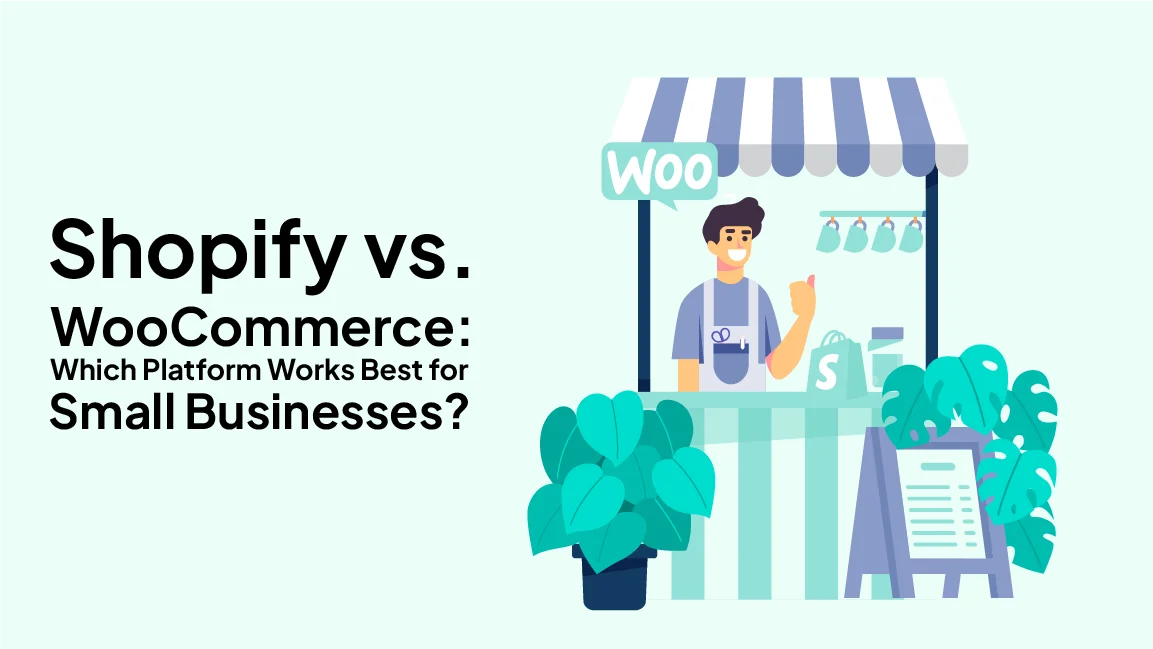Shopping used to be an experience. Wandering through stores, examining products, weighing options. The internet changed that. It made shopping faster, more convenient, yet still required effort. You browse, compare, add to cart, and check out. Every click is a decision. Every decision is a moment of hesitation.
Now, a shift is happening in the e-commerce industry. Agentic Commerce is changing everything. AI-driven shopping agents are taking over. These intelligent systems understand what you need before you do. They search, analyze, negotiate, purchase — all without you lifting a finger.
Think of it like this:
Instead of searching for a new laptop, checking reviews, comparing specs, and hunting for the best deal, your digital agent does it all. It reads your mind. It anticipates your preferences. It buys smarter than you ever could.
This isn’t science fiction. It’s happening. The future of e-commerce belongs to AI-powered agents making decisions on behalf of consumers. A revolution that promises convenience, efficiency, and personalization at a level never seen before.
In this article, we’ll break down what Agentic Commerce is, how it works, the technology behind it, and why it matters for both consumers and businesses.
1. Understanding Agentic Commerce
Agentic Commerce refers to a shopping model where AI-powered agents autonomously search, negotiate, and complete transactions on behalf of users. These smart agents analyze user preferences, monitor pricing trends, and interact with various e-commerce platforms to automate the entire buying process.
Unlike traditional e-commerce, where shoppers actively search for products and make purchasing decisions, Agentic Commerce eliminates much of the manual effort. It brings a new level of personalization and efficiency, and allows consumers to make purchases without direct involvement.
1.1 Why is Agentic Commerce Important?
Consumers today expect faster, more intuitive, and highly personalized shopping experiences. However, traditional e-commerce platforms still require users to manually browse, compare products, and check out. Agentic Commerce removes these steps by allowing AI to handle them, significantly improving:
- Efficiency – Reducing the time spent on shopping.
- Personalization – Making buying decisions based on user preferences.
- Cost Savings – Finding better deals and negotiating discounts automatically.
For businesses, this shift represents an opportunity to increase sales, reduce cart abandonment, and enhance customer engagement by integrating AI-driven systems into their platforms.
2. How Does Agentic Commerce Work?
Everything begins with data. AI agents rely on massive datasets including, past purchases, browsing behavior, market trends, and real-time pricing shifts. They process this information at speeds humans can’t match.
2.1 Predicting Consumer Needs
AI agents predict what users will want before they even think about it. They monitor past behaviour, consider preferences, and analyze seasonal trends. If they are running low on protein powder, the AI agent will reorder before the last scoop. If they need a new pair of sneakers, it finds options matching their style, size, and price range – before users even start searching.
2.2 Intelligent Product Discovery
No more scrolling through endless pages of similar products. AI cuts through the noise. It compares quality, evaluates reviews, detects fake ratings, and identifies the best options instantly.
Traditional search engines flood users with ads, paid placements, and biased rankings. AI agents sidestep these barriers. They prioritize user interests, filtering out irrelevant or overpriced products. The result? Genuine value. No distractions. Just what you need, when you need it.
2.3 Automated Price Negotiation
This is where it gets wild. AI doesn’t just find the best price but also negotiates. Some platforms allow AI systems to interact with sellers, pushing for discounts, bundling products, and securing limited-time offers.
Think about airline tickets. Prices fluctuate constantly. AI agents track these changes, buying at the lowest possible moment. They work the same way for e-commerce and ensure consumers never overpay.
2.4 Checkout and Payment Processing
Users don’t need to enter details, or confirm addresses. AI handles everything. Preferred payment methods, secure transactions, loyalty programs — every aspect of checkout is optimized. Some systems even suggest the best payment option based on cashback offers, installment plans, or credit card rewards.
2.5 Post-Purchase Management
The job doesn’t end at checkout. AI agents track shipments, send alerts, and manage returns. Something defective? The agent contacts customer service, arranges refunds, and even schedules return pickups. No more frustrating calls. No more endless hold times.
This level of automation means consumers never have to worry about missing deliveries, handling returns, or fighting for refunds. The AI takes care of everything.
3. Key Features of Agentic Commerce
The potential of Agentic Commerce lies in automation, intelligence, and adaptability. These are the core features that make it so revolutionary:
3.1 AI-Driven Decision Making
AI agents eliminate guesswork. They analyze preferences, compare options, and make purchases without requiring constant user input. Every decision is backed by data, which ensures optimal selections without delays or second thoughts.
3.2 Hyper-Personalization
Every shopping experience feels uniquely tailored. AI studies past purchases, browsing habits, and behavioural patterns to refine recommendations. Over time, suggestions become more precise, anticipating needs before they even arise.
3.3 Seamless Automation
The entire purchasing process runs without friction. Smart contracts finalize agreements, payments process automatically, and logistics adjust in real-time. There are no unnecessary steps, just a smooth and efficient transaction flow.
3.4 Secure Transactions
AI-driven security measures protect every purchase. Fraud detection systems monitor for anomalies, authenticate transactions, and prevent potential threats before they occur. Trust remains intact at every stage.
3.5 Real-Time Negotiation
Prices are no longer fixed. AI agents negotiate deals, track fluctuations, and secure the best offers instantly. Buyers benefit from cost savings without having to search for discounts manually.
4. The Technology Behind Agentic Commerce
Agentic Commerce thrives on advanced technologies. These systems are not only smart, they’re evolving, learning, and adapting. Here’s what makes them possible:
4.1 Artificial Intelligence & Machine Learning
AI drives everything. It processes data, predicts behavior, and refines choices. The more consumers shop, the smarter it gets. It understands personal preferences, spending habits, and quality standards. It detects trends and adapts in real-time.
4.2 Natural Language Processing (NLP)
Voice interactions power the next generation of commerce. Users speak, AI listens. It interprets requests, responds conversationally, and processes commands instantly.
Imagine someone saying: “Order me a laptop with an i7 processor under $1,000.” AI handles the rest. It finds, compares, negotiates, buys. Users don’t need to type or browse. Just results.
4.3 Blockchain & Smart Contracts
Security is critical. Blockchain ensures safe transactions. No fraud. No middlemen. Just direct, verifiable transactions between consumers and sellers.
Smart contracts automate agreements—refund policies, warranty claims, and order fulfilment. Everything runs on trustless, self-executing protocols.
4.4 IoT-Connected Devices
Agentic Commerce extends beyond phones and computers. Smart fridges order groceries. Wearables reorder supplements. Cars schedule maintenance. Connected devices anticipate needs and execute purchases before users realize they’re necessary.
5. Benefits of Agentic Commerce
Agentic Commerce capabilities are not limited to automation, It is all about efficiency, precision, and personalization. The advantages stretch far beyond simple convenience.
5.1 Time-Saving Efficiency
Shopping requires time, searching, comparing, and deciding. AI-powered agents handle all of this instantly. They scan thousands of options, filter out irrelevant choices, and deliver the best result.
5.2 Unmatched Personalization
Traditional e-commerce suggests products based on past purchases. Agentic Commerce goes deeper. It understands users’ habits, preferences, and needs before they even recognize them. Whether it’s ordering groceries, booking flights, or upgrading gadgets, the agent curates choices tailored to users.
5.3 Smarter Decision-Making
AI-driven agents don’t just pick the first deal they find. They analyze trends, read reviews, predict price drops, and even negotiate discounts. They think like a savvy shopper—without the emotional bias.
5.4 Seamless Transactions
Forget manual checkouts. AI agents handle everything—payment processing, order tracking, and even handling returns automatically. No more logging in, entering details, or worrying about missed deliveries.
5.5 Cost Savings
Price comparison websites help, but agentic systems do more. They detect hidden fees, apply the best coupons, and purchase at the most strategic time. You spend less without even trying.
This is shopping without effort, without wasted time, and without bad decisions. A frictionless, intelligent buying process designed entirely for you.
6. Challenges of Agentic Commerce
Despite its promise, Agentic Commerce comes with hurdles—technical, ethical, and logistical. Adoption won’t be instant, and trust issues will arise.
6.1 Trust and Transparency
Who controls your AI agent? How does it make decisions? Users need confidence that these systems prioritize their best interests rather than maximizing profits for retailers. Black-box algorithms can be a concern. Without transparency, trust crumbles.
6.2 Data Privacy and Security Risks
AI agents need access to vast amounts of personal data to function effectively. Shopping habits, financial details, even location history. This raises security concerns—what if this data is misused or breached? Stronger encryption and regulations are crucial.
6.3 Loss of Consumer Control
Convenience is great, but will users feel disconnected from their purchasing power? If AI makes all the decisions, consumers might lose autonomy in the shopping process. Striking a balance between automation and user control is key.
6.4 Vendor Bias and Manipulation
If AI shopping agents partner with brands, will recommendations remain objective? If platforms prioritize sponsored deals over genuine value, users may end up spending more instead of saving.
6.5 Adaptation and Learning Curve
Not everyone is ready to let AI handle their purchases. Understanding how to set preferences, trust decisions, and override suggestions will require educating users and refining interfaces for wider adoption.
Challenges exist, but they are problems waiting to be solved. The tech is moving forward, and soon, these issues will be tackled head-on.
7. How BrandCrock is Adapting to Agentic Commerce
BrandCrock specialises in building cutting-edge e-commerce solutions that align with the future of digital shopping. Our expertise in:
- AI-powered automation
- Custom e-commerce development
- Secure transaction technologies
…ensures that businesses can stay ahead of this transformation. Whether it’s integrating AI-driven shopping assistants, optimizing digital storefronts, or implementing blockchain-based payment systems, we help businesses embrace the next era of commerce.
8. Final Thoughts
Agentic Commerce represents the next step in the evolution of e-commerce, where AI-powered agents revolutionize the way consumers shop and businesses sell. While it comes with challenges, its potential to enhance efficiency, personalization, and automation is undeniable.
As technology advances, businesses that adapt to this new era will stay ahead, providing faster, smarter, and more engaging shopping experiences. At BrandCrock, we’re committed to helping brands navigate this shift and build future-ready e-commerce solutions.








